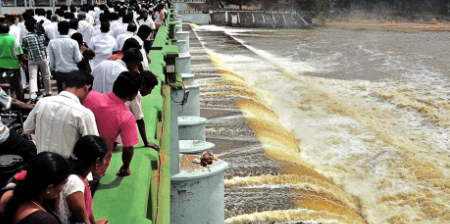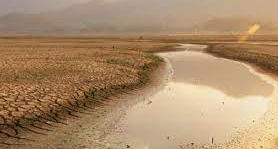The Supreme Court’s refusal to interfere with an order telling Karnataka to release 5,000 cusecs of water daily to Tamil Nadu for 15 days has sparked protests in the former stateThe perennial tug-of-war between Tamil Nadu and Karnataka – over sharing of water from the Cauvery River, with the focus on divisions during a ‘distress year’ – made headlines (again) last week after the Supreme Court refused to interfere with orders directing the latter to release 5,000 cusecs daily for 15 days to the formerThe Cauvery Water Regulatory Committee order (upheld by the Cauvery Water Management Authority) led to protests in Karnataka, where farmer and pro-Kannada groups, and labour unions have called for two bandhs in 96 hours – in Bengaluru today and across the state on Friday
The fiery sentiments behind this fight have been emphasised by visuals of pro-Kannada protesters shouting slogans and burning effigies. Farmer groups are also protesting in Mysuru and Mandya, as well as Bengaluru, to express their anger and demand the state refuse to release water.The complexities have been underlined by confusion over which group supports which bandhKarnataka’s Congress government has said it cannot release water to Tamil Nadu – where the Dravida Munnetra Kazhagam (its state and national-level ally) is in power – because of insufficient rainfall in the Cauvery and Kabini catchment areas this year. Deputy Chief Minister Shivakumar, who is also Water Resources Minister, has said the state has only a third of the required water level.
The DMK, meanwhile, isn’t overjoyed with the order to release 5,000 cusecs – last month the Supreme Court turned down a plea for 24,000 cusecs and last week it rejected another to increase its share to 7,200 cusecs. However, given acrimonious ties on this issue, it is prepared to accept what it can get and has asked the centre to ensure the Karnataka government abides by the CWMA order Predictably, the opposition Bharatiya Janata Party and Janata Dal (Secular) – who this week announced an alliance ahead of the 2024 Lok Sabha election – have jumped in too and slammed the ruling Congress for having failed to protect the interests of farmers and the people of the state The Congress has said it is acting in the farmers’ interest, and Mr Shivakumar has called for peace

A battle that has raged for over a century should have concluded after the Supreme Court’s 2018 order, which specified how much each party (including the city of Bengaluru, Kerala and Puducherry) should get from the Cauvery. The court’s order was a revision of the 2007 order passed by a tribunalIt has never been that simple though, with Karnataka and Tamil Nadu frequently accusing the other of demanding too much and sharing too little, respectively. One problem is lack of clarity over water-sharing in a ‘distress year’, or a year in which there has been less-than-normal rainfallThe dispute dates back to the colonial period. In a 1924 agreement Tamil Nadu and Puducherry were to get the lion’s share of surplus water from the to-be-built Krishna Raja Sagar dam. Less than three decades later there was trouble again, including violent clashes over the construction of more dams
This was possibly when the water-sharing dispute really took off, as Tamil Nadu is a lower riparian state and was, by then, dependent on water from the Cauvery to water its crops. A proposal for Karnataka and Tamil Nadu to each share 47 per cent of total water was refused by the latter state and, in 1986, the matter reached the Supreme Court, which ordered a tribunal to settle mattersThe tribunal gave Tamil Nadu 205 tmcft but that prompted protests in Karnataka, forcing the Supreme Court to overrule the latter state’s attempts to circumvent the order. In 1998 a second tribunal was set up and, nine exhausting years later, reduced Tamil Nadu’s share to 192 tmcft.
The Supreme Court was involved again in 2018, when it tweaked allocations. So, now Tamil Nadu is due 404.25 tmcft, or thousand million cubic feet, and Karnataka is to get 284.75 tmcft. The court also laid down rules to govern when water must be released and how much on each occasionKarnataka groups are now again protesting this division, pointing to weather reports that say the region from which the Cauvery springs from had nearly 30 per cent deficit rainfall, while other catchment areas had nearly 60 per cent less rain than normal. This, they have stressed, means the state is simply not in a position to share water per normal rules Munnetra Kazhagam (its state and national-level ally) is in power – because of insufficient rainfall in the Cauvery and Kabini catchment areas this year. Deputy Chief Minister Shivakumar, who is also Water Resources Minister, has said the state has only a third of the required water level.

